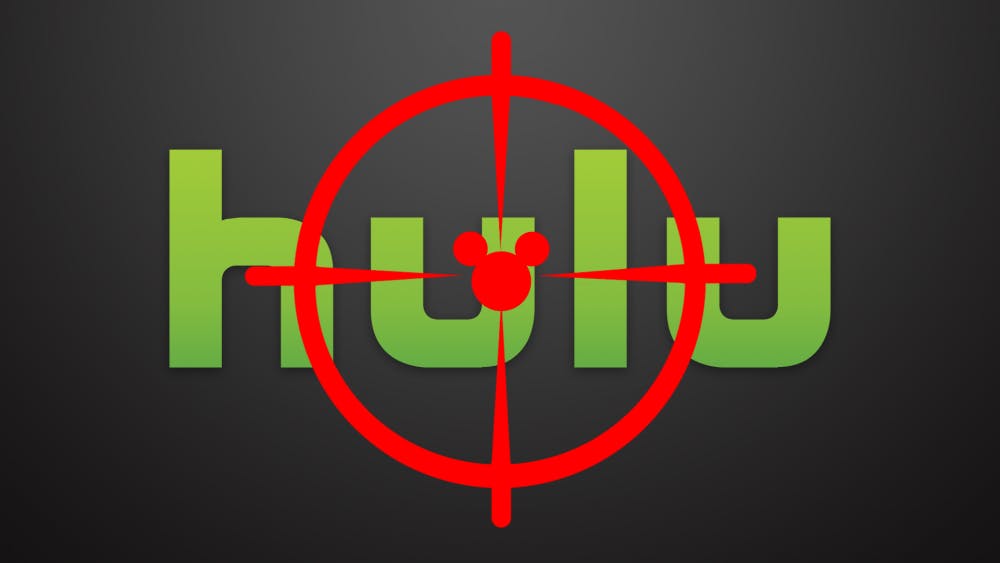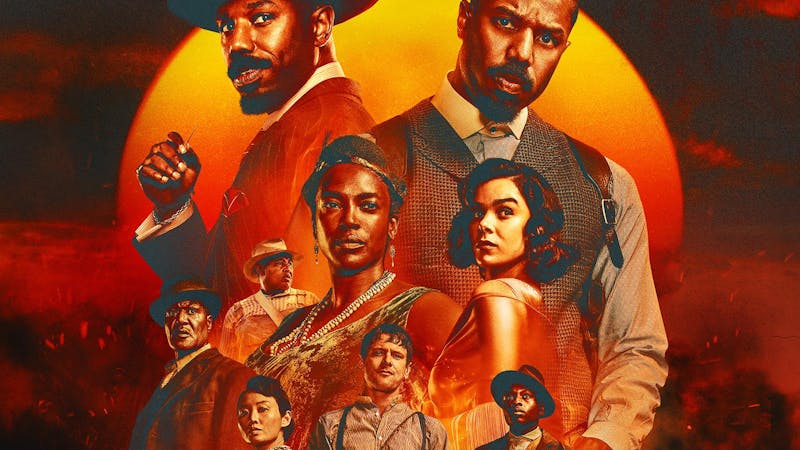by Jeremy Rogers and Nolan Leahy When it comes to the various streaming services, there’s Netflix, Hulu, HBO Now, Amazon Prime Video, Sling TV, and other future competitors to consider as well. HBO Now and Sling TV have yet to reach the one million subscriber statistic just yet. Amazon Prime Video has 45 million subscribers, but most of the people who have Amazon Prime don’t even have it to watch the videos according to The Wrap writer Tony Maglio. Hulu’s subscriber count is at roughly 9 million, while the monster that spits out the hottest streams is Netflix with a grand total of over 70 million subscribers. Netflix is the powerhouse of the young Internet streaming industry that’s encouraging people to cut the cable cord and swap to an on-demand television service that isn’t filled with infomercials, shopping networks, and innumerable commercials. In its beginnings, Netflix has had a strong start with content, because the competition was limited. Various companies signed on with Netflix to permit streaming of television shows that would normally show on NBC, CBS, Comedy Central, TBS, Disney Channels, and even Cartoon Network. Hulu offers the same type of service but with advertisements subsidizing its standard monthly subscription. The benefit of Hulu is that any current cable TV show like South Park or America’s Got Talent will immediately have new episodes uploaded and ready to watch with their service. Despite this benefit, Hulu doesn’t have as much ground breaking original material as Netflix has been able to offer within the most recent years. With the increase in profits, Netflix has introduced exclusive Netflix content such as the popular shows like House of Cards or the most recent hit Stranger Things. They have even moved into the anime market with the original and highly praised The Seven Deadly Sins. Recently Netflix lost a vast amount of content that’s disappointed the subscriber base. The company lost Bob’s Burgers, Futurama, and House within the last several months, and that’s not even the worst of it. https://twitter.com/ImBrianJoyce/status/871830971326267392 In more recent news, Disney movies will be leaving Netflix. How big of an impact will this have on Netflix? Surprisingly little. Netflix seems to have been anticipating business moves like this for about a half decade. Netflix seems to have seen a need to generate original programming. In a move straight out of HBO’s 1980s playbook when it was faced with rivals like Showtime and The Movie Channel, Netflix decided to create its own content in the form of House of Cards for which writing started in early 2011. HBO made a similar move in 1983 with the premier the channel’s first original content, The Terry Fox Story. Netflix has been slowly building its library of original content since 2013. Currently Netflix Originals (films, documentaries, and television-style series produced and aired exclusively on Netflix) make up about 15% of its library. These shows cost gobs of money to produce, and with years of building a consumer base off of streaming other producers’ content, Netflix now spends roughly $6 billion on its library with about $1.8 billion going towards Netflix Originals. This is a good business move on Netflix’s part, as having a solid base of content for consumers to access gives stability to the platform known for its constantly shifting library. https://twitter.com/netflix/status/894549044927660032 As Netflix moves forward, it seems to be relying heavier on its own original content instead of plugging high profile deals with other studios. This is made evident by the company’s first acquisition. The announcement of this acquisition was overshadowed in much of entertainment media by the big Disney announcement that happened the day after this deal was finalized and made public. Much like Warner Bros. in 1968 and Disney in 2009, Netflix has bought a comic company, namely Scottish comic book company Millarworld. For the uninitiated, Millarworld wrote the comics that were the basis for 2008’s Wanted, 2010’s Kick-Ass, 2013’s Kick-Ass 2, and 2014’s Kingsman: The Secret Service as well as its 2017 sequel. This means that any of the comics made by Mark Millar and his cohort are fair game as far as Netflix adaptions go. If these adaptations take off the way Netflix originals like Stranger Things or Black Mirror have, then Netflix will be expertly poised to possibly acquire even more intellectual property and to attract ever more prestigious content creators.
Disneyflix?
Disney seems to be making an interesting move by taking their content and moving it to their own streaming platform. By consolidating their various intellectual properties into one centralized location, they are future-proofing their television production and simultaneously fixing a financial problem. In the last year, Disney’s cable networks have received a 14% drop in monthly minutes watched. That means that people are watching 14% less of Disney’s advertisements. This in turn makes Disney a less desirable place to sell ads, meaning Disney earns less money. If Disney can deliver a better way to get its content into people’s homes so they can see the ads Disney gets paid to show, then Disney gets more money. Seeing as Netflix’s minutes watched climbed 669% in the same time period, it seems like a safe bet that Disney will be able to increase its viewership through making a more convenient media-consuming experience.
In the last year, Disney’s cable networks have received a 14% drop in monthly minutes watched. That means that people are watching 14% less of Disney’s advertisements. This in turn makes Disney a less desirable place to sell ads, meaning Disney earns less money. If Disney can deliver a better way to get its content into people’s homes so they can see the ads Disney gets paid to show, then Disney gets more money. Seeing as Netflix’s minutes watched climbed 669% in the same time period, it seems like a safe bet that Disney will be able to increase its viewership through making a more convenient media-consuming experience.
 It’s one thing to make a platform that is easy to access and another thing entirely to keep people using that platform. Disney is known for its impressive library of classic animated films, but is that library enough to make people pay for another streaming service? Disney believes that way to retain customers is by producing new, compelling content. In a statement, the CEO of the Walt Disney Company, Bob Iger, said, “We’ve already begun the development process at the Disney Channel and at the studio to create original TV series and original movies for this service… We’ve commissioned them to produce more films, with the incremental films being produced very, very specifically and very exclusively for this service. So this will represent a larger investment in Disney-branded intellectual property, both TV and movies.”
Disney has been a bit tight lipped about details of its future plans in regard to television production, so some key questions remain. Will the production of traditional shows for the Disney Channel or for Disney XD drop in quality as the more premium shows are awarded online exclusivity to boost subscription numbers? Will Disney drop entire channels like Disney Junior, Disney Cinemagic, or even Disney XD to add more content to its online service? How will this affect the company’s mobile app Disney Movies Anywhere? Hopefully satisfactory answers to all of these questions will come as Disney solidifies its plans in the coming weeks and months.
It’s one thing to make a platform that is easy to access and another thing entirely to keep people using that platform. Disney is known for its impressive library of classic animated films, but is that library enough to make people pay for another streaming service? Disney believes that way to retain customers is by producing new, compelling content. In a statement, the CEO of the Walt Disney Company, Bob Iger, said, “We’ve already begun the development process at the Disney Channel and at the studio to create original TV series and original movies for this service… We’ve commissioned them to produce more films, with the incremental films being produced very, very specifically and very exclusively for this service. So this will represent a larger investment in Disney-branded intellectual property, both TV and movies.”
Disney has been a bit tight lipped about details of its future plans in regard to television production, so some key questions remain. Will the production of traditional shows for the Disney Channel or for Disney XD drop in quality as the more premium shows are awarded online exclusivity to boost subscription numbers? Will Disney drop entire channels like Disney Junior, Disney Cinemagic, or even Disney XD to add more content to its online service? How will this affect the company’s mobile app Disney Movies Anywhere? Hopefully satisfactory answers to all of these questions will come as Disney solidifies its plans in the coming weeks and months.
“We’ve already begun the development process at the Disney Channel and at the studio to create original TV series and original movies for this service… We’ve commissioned them to produce more films, with the incremental films being produced very, very specifically and very exclusively for this service. So this will represent a larger investment in Disney-branded intellectual property, both TV and movies.” - Bob IgerDespite the potential benefits for Disney in leaving Netflix, there is definitely a potential down side to its abandonment. With the Netflix partnership, Netflix provided a good variety of content that filled in the watching needs for older audiences. Depending on how much viewership Disney will receive, the margins of profit could vary. Though Disney has a large and vast collection of shows to provide including that of Marvel and ESPN, it doesn’t seem like there is enough content to satisfy every adult which is a problem that they haven’t necessarily faced before. According to Monitor Correspondent, Stephanie Hanes, the number of single adults continues to climb in the United States, and the fertility rate is now the lowest in US history. This means that as for right now, there is less potential for larger younger audiences in the future and more potential for private independent viewership. Cable tended to bundle in Disney, and the kids drag parents into the theaters. Despite these victories in viewership, streaming is arguably more based on the independent rather than the average family. Disney is mainly known for making content for kids. They have good shows like the recently finished cartoon Gravity Falls, and absolutely atrocious live action shows like Lab Rats and Austin & Ally. Disney’s animated shows can be great, with some adult humor mixed in to keep the shows interesting for parents watching with their kids. Despite this factor, couples without children or single adults are going to be a tougher sell. The only rated R film that Disney could offer on the service that comes to mind is Deadpool, but there have been numerous comments from movie goers stating that the superhero film trend is getting tiresome. Steven Spielberg even stated that he believes that the superhero media will “go the way of the western” with how they are getting so mass-produced to the point where they will fatigue the market with oversaturation.
 There are only two solutions two this issue: Disney can offer more rated R or Mature content while risking its image as a child-friendly source of entertainment, or Disney could drastically improve the writing of the live action and animated shows that are designed for kids. It definitely feels like a guarantee that most 35 year olds won’t be buying into a Disney subscription to watch a rehashing of an old show from the 90s à la Girl Meets World or Raven’s Home, and betting on that factor alone is risky in the streaming business.
There are only two solutions two this issue: Disney can offer more rated R or Mature content while risking its image as a child-friendly source of entertainment, or Disney could drastically improve the writing of the live action and animated shows that are designed for kids. It definitely feels like a guarantee that most 35 year olds won’t be buying into a Disney subscription to watch a rehashing of an old show from the 90s à la Girl Meets World or Raven’s Home, and betting on that factor alone is risky in the streaming business.
The Future of Film
Things may be looking up for Netflix, but what about the whole streaming industry? As stated earlier, Disney is making new shows and movies with this streaming service in mind, so is this the start of a paradigm shift in how mainstream entertainment content will be produced and distributed? At first glance this looks like it may be the beginning of the end. Maybe more corporate content creators like Comcast, 21st Century Fox, and Time Warner will abandon Netflix and similar streaming services to make their own subscription based streaming services. This would present a large problem for one of Netflix’s most competitive rivals: Hulu. Hulu is a joint venture owned solely by all the aforementioned media companies and Disney. The interesting question in this discussion seems to be the future of Hulu and where cable television may be going. If Disney is starting up its own streaming service for sports in 2018 and for its own original content in 2019, what will happen to the streaming service that the Mouse owns a 30% stake in?
Many people have been musing about the possibility of an “adpocolypse” being imminent since many assume that Disney and other media companies will adopt a streaming service akin to Netflix and HBO Go’s ad free models. This is said to be the beginning of the end for traditional advertising, but there seems to already be a tried and safe way of making advertisements for a digital platform. What seems more likely is for these companies to emulate the success of Hulu by making ads a regular fixture of their paid services.
This move seems like it may be an early death knell of the online television market populated by the likes of Sling TV, Playstation Vue, and DirecTV. If major networks are looking to become their won distributors, then it looks like many of these platforms may either die off, go indie, or become acquired and integrated into one of the networks’ own digital platforms.
However the future unfolds, it seems that most of us will be able to watch it from our computers, smart TVs, phones, and video game consoles.
Hulu is a joint venture owned solely by all the aforementioned media companies and Disney. The interesting question in this discussion seems to be the future of Hulu and where cable television may be going. If Disney is starting up its own streaming service for sports in 2018 and for its own original content in 2019, what will happen to the streaming service that the Mouse owns a 30% stake in?
Many people have been musing about the possibility of an “adpocolypse” being imminent since many assume that Disney and other media companies will adopt a streaming service akin to Netflix and HBO Go’s ad free models. This is said to be the beginning of the end for traditional advertising, but there seems to already be a tried and safe way of making advertisements for a digital platform. What seems more likely is for these companies to emulate the success of Hulu by making ads a regular fixture of their paid services.
This move seems like it may be an early death knell of the online television market populated by the likes of Sling TV, Playstation Vue, and DirecTV. If major networks are looking to become their won distributors, then it looks like many of these platforms may either die off, go indie, or become acquired and integrated into one of the networks’ own digital platforms.
However the future unfolds, it seems that most of us will be able to watch it from our computers, smart TVs, phones, and video game consoles.




















